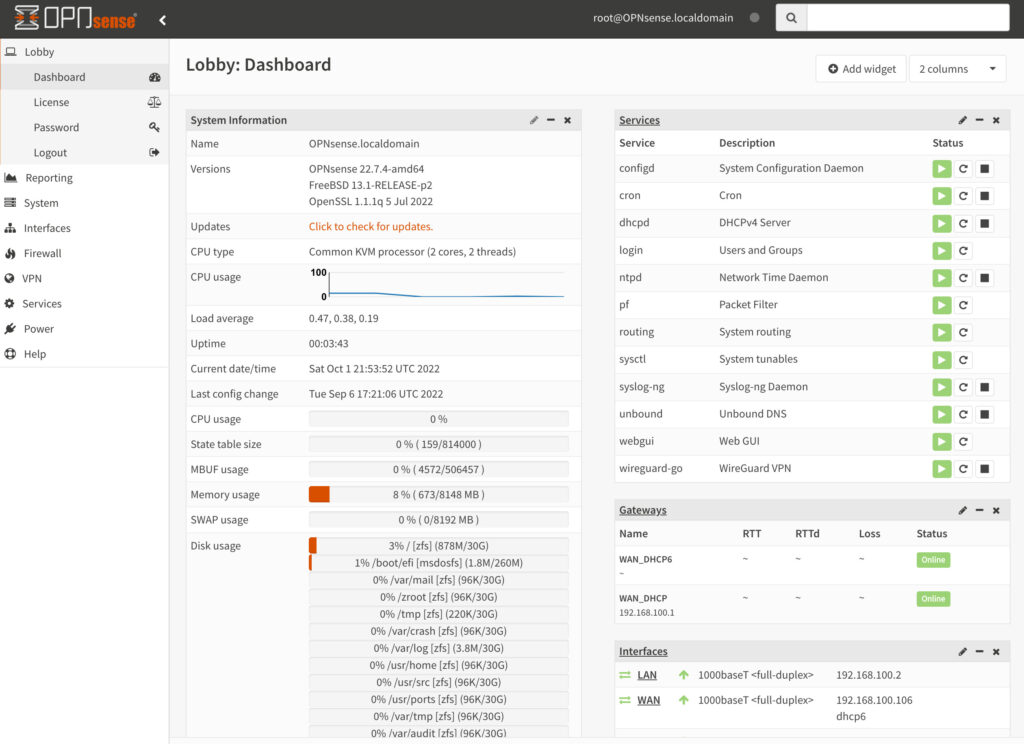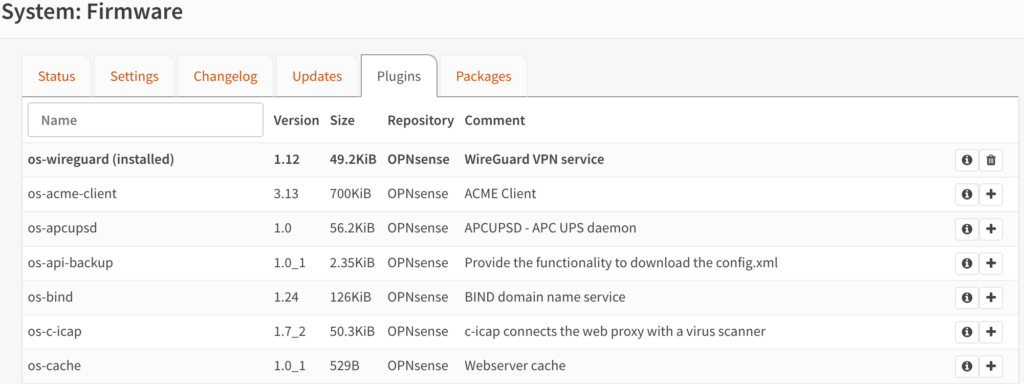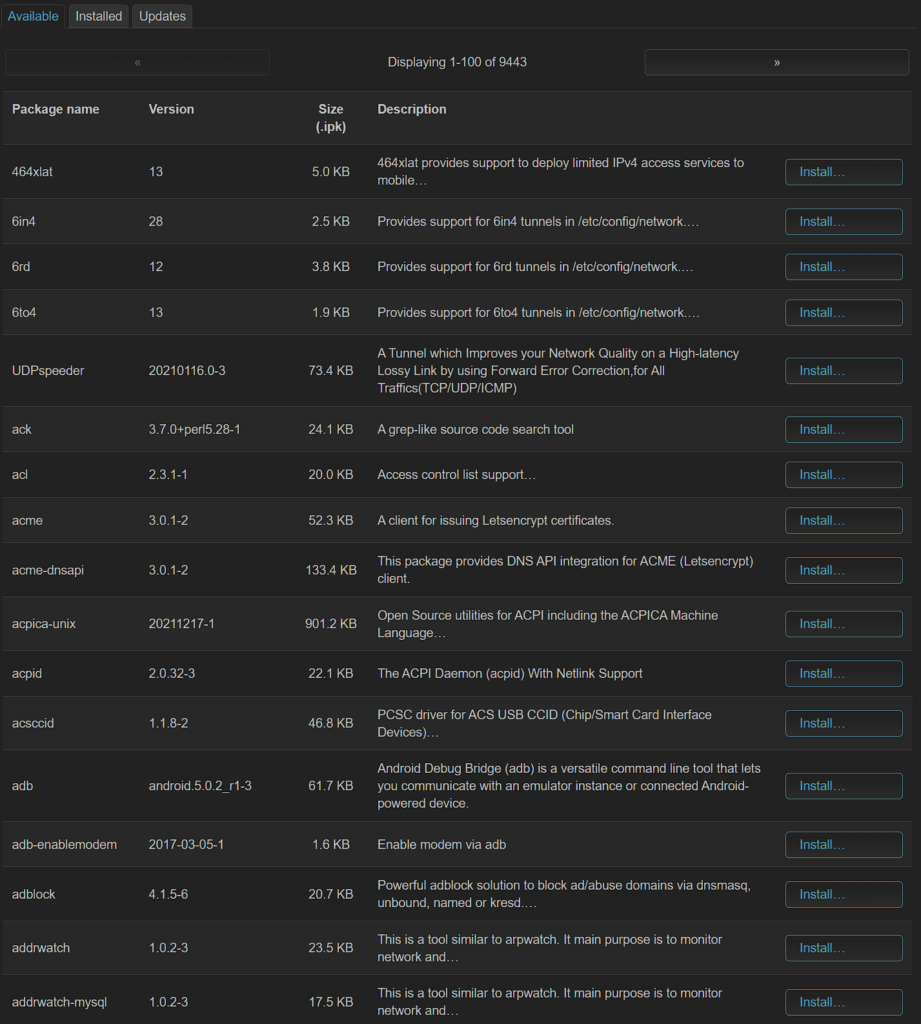In this article, we’re going to look at OPNsense vs. OpenWrt. OPNsense and OpenWrt are both firewalls that have many similarities, though they’re packaged in an entirely different way. OPNsense is packaged as a firewall that can be installed on personal hardware or purchased through Deciso where the software will come preinstalled on the hardware.
From a reliability standpoint, purchasing a device through Deciso provides peace of mind and the greatest form of reliability. Unlike OPNsense, however, OpenWrt is designed to be flashed onto existing hardware so that you can have a generic operating system on various types of devices.
OPNsense vs. OpenWrt: Which Firewall Should You Use?
Before we look at OPNsense vs. OpenWrt, we will look at both operating systems to determine the key differences.
What is the OPNsense Firewall?
Similar to pfSense, OPNsense is a free and open-source FreeBSD-based firewall, created by Deciso. OPNsense has many of the same features as pfSense, but an entirely different GUI which we’ll take a look at below. Deciso sells hardware that you can purchase which comes pre-installed with OPNsense, but can also be installed on personal hardware or in a virtual machine.

OPNsense is extremely customizable and has a bunch of different things you can configure, from VLANs to VPNs, and generally, is extremely user-friendly.
What is OpenWrt and How Does it Work?
OpenWrt is an open-source operating system based on Linux that targets embedded devices. The biggest selling point of OpenWrt is that it provides a fully writable filesystem, where packages can be installed/used. This is special because OpenWrt can be installed on existing routers, meaning that you can purchase a router, flash it with OpenWrt and use it instead of the default operating system.
This is a huge selling point for people who have existing hardware, as the downside of most router firmware is that it’s extremely lacking in terms of features. However, with OpenWrt, you’ll be able to install various packages that will unleash the power of an existing or new router.

User Interface for OPNsense/OpenWRT
No matter what system you’re using, the user interface is extremely important as it’s what you use to interact with the system. While OPNsense and OpenWrt both have clean interfaces, OPNsense makes logical sense.
To be clear, OpenWrt is minimal, and trying to find what you’re looking for isn’t difficult as the options are limited, but OPNsense is extremely easy to navigate.

OpenWrt has a menu bar at the top and OPNsense has a menu bar on the left that allows you to navigate through the system. OPNsense has significantly more options and functionality and it’s also laid out slightly more logically, though there are a lot more options that some users may find confusing.

Usability for Admins
OPNsense and OpenWrt are extremely similar when it comes to usability in terms of basic functionality. If you’re interested in creating firewall rules, static DHCP leases, or basic routing, they both function well.
However, if you’re interested in doing slightly more advanced things like configuring a VLAN, OPNsense is drastically easier than OpenWrt. It’s not that it’s hard on OpenWrt, just that it’s a lot easier and logical with the OPNsense GUI.
It’s also important to understand that in general, OPNsense is a lot more powerful than OpenWrt. While they can both do similar things, the out-of-the-box functionality of OPNsense is superior to OpenWrt.
Packages & Plugins for Each OS
In OPNsense and OpenWrt, you can install various different applications that will help customize your experience.
Plugins/Packages in OPNsense

Software in OpenWrt

A lot of the packages and plugins that you can download are similar. However, there are a ton of available packages in OpenWrt. This doesn’t necessarily make OpenWrt better though, as the sheer number of packages makes it more confusing than OPNsense.
In general, you should be able to get everything set up on OpenWrt properly, but more due diligence is required to ensure that the correct packages are installed.
VPN Servers for OpenWRT/OPNsense
If you’re interested in setting up a VPN, OPNsense, and OpenWrt allow you to do it relatively easily. However, configuring a VPN on OpenWrt involves installing a package, where OpenVPN, WireGuard, and IPSec VPNs can be configured on OPNsense by default (though additional options exist that you can download like Tailscale).

You can configure a VPN on OpenWrt as well, but please be aware that installing packages is necessary. This can be viewed as a good thing (to keep things minimal if you don’t intend to use them), but if you plan on installing them, you must ensure that the correct packages are configured.
Conclusion & Final Thoughts: OPNsense or OpenWrt?
This article looked at OPNsense vs. OpenWrt. While both OPNsense and OpenWrt offer similar functionality, the main thing that should be considered is the hardware that you plan on using.
If you’re purchasing new hardware, I’d really recommend OPNsense (or pfSense). The extra features, ease of use, and helpful documentation that exists make it difficult to pass up. If you have an existing router and would like to flash a newer firmware on it (assuming that it’s compatible with OpenWrt and not compatible with OPNsense), OpenWrt is the way to go.
Thanks for checking out the article on OPNsense vs. OpenWrt. If you have any questions, please leave them in the comments!




